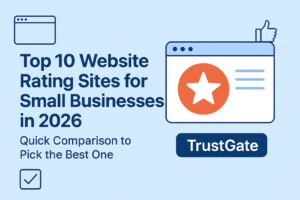[vc_row][vc_column][vc_column_text animation=”none”]
Online Scams: A Comprehensive Guide to Detection and Prevention
Online scams and frauds are a growing concern in today’s digital world. As technology advances, scammers are finding new ways to trick people into revealing their personal and financial information. We need to understand these tactics and take steps to protect ourselves from falling victim to these crimes.
In this article, we will:
- Explore different types of online scams and frauds, such as phishing scams, identity theft through impersonation scams, and money transfer and payment gateway frauds.
- Discuss how these scams work, the warning signs to look out for, and tips to avoid becoming a target.
- Provide practical advice on how to safeguard your personal information from scammers, including secure online data-sharing practices, using strong passwords, and enabling two-factor authentication.
- Outline the actions you should take if you do become a victim of an online scam or fraud.
By being informed and proactive about online security, we can protect ourselves from these threats and use the internet safely.[/vc_column_text][vc_gap height=”20″][/vc_column][/vc_row][vc_row][vc_column][vc_fl_title title_style_text=”title-three” fl_style_title_preview=”title-three” animation=”none”]
Common Types of Online Scams and Frauds
[/vc_fl_title][vc_gap height=”20″][vc_single_image image=”4143″ alignment=”center” animation=”none”][vc_gap height=”20″][vc_column_text animation=”none”]Online scams and frauds are increasingly common in today’s digital age. It’s important to know the different types of scams that exist so you can protect yourself from becoming a victim. In this section, we’ll talk about one of the most common online scams: phishing scams.
1. Phishing Scams
Phishing scams are when scammers try to trick people into giving them sensitive information like passwords, credit card numbers, or social security numbers. They usually do this through fake emails or websites that look real.
The scammers might pretend to be well-known companies or banks and try to scare or rush you into giving them what they want. They could send emails saying there’s a problem with your account and you need to fix it right away.
How to Spot Phishing Emails or Websites
To avoid falling for phishing attempts, watch out for these signs that a message or website might be fake:
- Bad spelling or grammar: Real companies usually have good spelling and grammar, so mistakes can be a sign of a scam.
- Strange email addresses: Check who sent the email. Phishing emails often come from weird or misspelled addresses that don’t match the real company.
- Asking for personal info urgently: Be careful if an email tells you to give personal info right away. Legit companies usually don’t ask for important stuff through email.
- Weird web addresses: Before clicking on any links in an email, hover over them to see where they go. If the address looks strange or doesn’t match the real website, it might be a phishing trick.
- Unexpected files: Don’t trust attachments in emails you didn’t ask for, especially if they end in .exe or have macros. These could be viruses that steal your info.
Tips to Avoid Falling for Phishing Attempts
To protect yourself from phishing scams, follow these tips:
- Be careful with email links and files: Don’t open attachments or click on links in emails from people you don’t know or that seem weird.
- Check with the company: If you get an email asking for personal info, contact the company directly through their official website or customer service line to make sure it’s real.
- Don’t rush: Scammers want you to panic and do things without thinking. Take your time to decide if a request is legit before giving any important info.
- Update your stuff: Keep your computer’s software (like Windows), web browsers (like Chrome), and antivirus programs up to date. This helps protect against known tricks scammers might use.
- Learn more: Stay updated on the latest phishing tricks and signs of scams by reading articles and news about online security.
By knowing about phishing scams and being careful with suspicious emails or websites, you can lower the chances of getting scammed. In the next section, we’ll talk about another common type of online fraudster: when scammers pretend to be you to steal your identity.
2. Identity Theft through Impersonation Scams
Impersonation scams are a prevalent form of online fraud that users should be aware of to protect themselves from falling victim. In these scams, scammers manipulate victims by pretending to be someone else, such as a trusted individual or organization. Here are some key points to understand about identity theft through impersonation scams:
Definition of Impersonation Scams
Impersonation scams involve the act of deceiving individuals by assuming another person’s identity or representing oneself as a legitimate entity. Scammers use various tactics to gain the trust of their victims and exploit them for personal gain.
Methods Used in Impersonation Scams
There are different methods scammers employ in impersonation scams, including:
- Social Media Impersonation: Scammers create fake social media profiles, posing as someone familiar to the victim, such as a friend, family member, or even a celebrity. They then use these fraudulent accounts to deceive victims into sharing personal information or sending money.
- Tech Support Scams: In tech support scams, scammers pretend to be technical support representatives from reputable companies or organizations. They reach out to victims through phone calls or pop-up messages on their devices, claiming that there is an issue with their computer or software. The scammers trick victims into providing access to their devices or paying for unnecessary services.
Protective Measures Against Impersonation Scams
To safeguard yourself from falling prey to impersonation scams, consider taking the following precautions:
- Be cautious of unsolicited communications: Verify the authenticity of any unexpected requests for personal information, financial details, or assistance before responding.
- Verify identities and contact information: Independently verify the identity and contact information of individuals or organizations reaching out to you. Use official websites or contact details obtained through reliable sources.
- Enable privacy settings on social media: Adjust your privacy settings on social media platforms to limit the visibility of your personal information to strangers.
- Be skeptical of urgent or alarming requests: Scammers often create a sense of urgency or fear to manipulate victims. Take a step back and consider the legitimacy of such requests before taking any action.
By understanding the methods used by scammers in impersonation scams and implementing protective measures, you can significantly reduce the risk of falling victim to these deceptive schemes. Stay vigilant and always prioritize your online security.
3. Money Transfer and Payment Gateway Frauds
Online scams involving money transfer and payment gateway frauds pose significant risks to individuals and businesses. It’s essential to be aware of the potential threats and take proactive measures to safeguard against fraudulent activities.
Discuss the Risks
Potential Risks of Money Transfer Scams:
- False promises of monetary gain
- Unauthorized transactions
- Identity theft
Fraudulent Use of Payment Gateways:
- Unauthorized access to financial information
- Deceptive practices in online transactions
Red Flags to Watch Out For
Here are some warning signs that may indicate potential money transfer scams:
- Unsolicited requests for financial assistance
- Dubious investment opportunities
- Requests for sensitive personal or financial information
It’s crucial to verify the legitimacy of payment gateways and ensure secure encryption for online transactions.
Ensuring Secure Payments Online
To protect yourself from money transfer and payment gateway frauds, here are some steps you can take to ensure secure payments online:
- Use reputable and trusted payment platforms.
- Avoid using unsecured Wi-Fi networks for financial transactions.
- Regularly monitor your account activity for any suspicious transactions.
- Review transaction details carefully before proceeding with any payment.
- Stay vigilant against unfamiliar or suspicious payment requests.
By understanding the risks involved in money transfer and payment gateway frauds, individuals can strengthen their defenses against online frauds and make informed decisions to protect their financial security.[/vc_column_text][vc_gap height=”20″][/vc_column][/vc_row][vc_row][vc_column][vc_fl_title title_style_text=”title-three” fl_style_title_preview=”title-three” animation=”none”]
Tips to Safeguard Your Personal Information from Scammers
[/vc_fl_title][vc_gap height=”20″][vc_row_inner][vc_column_inner][vc_single_image image=”4145″ animation=”none”][/vc_column_inner][/vc_row_inner][vc_gap height=”20″][vc_row_inner][vc_column_inner][vc_column_text animation=”none”]Protecting personal information and practicing good cybersecurity awareness is essential in today’s digital age. With the increasing threat of website scams and fraud, it is crucial to take proactive measures to safeguard your data online. Here are some tips to help you protect your personal information from scammers:
Secure Online Data Sharing and Storage Practices
When it comes to sharing and storing your data online, it is important to follow secure practices to minimize the risk of falling victim to scams or fraud. Here are some key steps you can take:
- Be cautious with your personal information: Only share sensitive information, such as your Social Security number or bank account details, with trusted sources that have a legitimate need for it.
- Beware of public Wi-Fi networks: Public Wi-Fi networks can be vulnerable to hackers who may try to intercept your data. Avoid accessing or sharing sensitive information when connected to public Wi-Fi. If you need to use a public network, consider using a VPN (Virtual Private Network) for added security.
- Use secure file-sharing services: When sharing files containing sensitive information, opt for secure file-sharing services with encryption and password protection.
- Regularly update your software: Keep your operating system, web browsers, and other software up-to-date with the latest security patches and updates. Outdated software can have vulnerabilities that scammers may exploit.
- Backup your data: Regularly backup your important files and data on external hard drives or cloud storage services. This ensures that even if you fall victim to a scam or experience data loss, you can still access your valuable information.
Use Strong and Unique Passwords for Online Accounts
One of the simplest yet most effective ways to protect your personal information is by using strong and unique passwords for all your online accounts. Here are some tips for creating strong passwords:
- Length and complexity: Use a combination of uppercase and lowercase letters, numbers, and special characters. Aim for a password length of at least 12 characters.
- Avoid common patterns: Avoid using easily guessable patterns such as consecutive numbers or letters (e.g., “123456” or “abcdef”).
- Don’t reuse passwords: Ensure that each of your online accounts has a unique password. Reusing passwords across multiple platforms increases the risk of a security breach.
- Consider using a password manager: Password managers can help you generate and securely store complex passwords for all your accounts. They also make it easy to manage and update your passwords regularly.
Enable Two-Factor Authentication for Added Security
Two-factor authentication (2FA) adds an extra layer of security to your online accounts by requiring additional verification beyond just a password. It typically involves something you know (password) and something you have (e.g., a verification code sent to your phone). Here are some steps to enable 2FA:
- Check if the service supports 2FA: Look for account settings or security options within the platform or app to see if they offer 2FA.
- Choose an authentication method: Common methods include receiving a verification code via SMS, using an authenticator app, or utilizing biometric factors such as fingerprint or facial recognition.
- Follow the setup instructions: Each platform will have its process for enabling 2FA. Follow the instructions provided by the service and make sure to securely store any backup codes provided.
Enabling two-factor authentication adds a layer of protection against unauthorized access to your accounts, reducing the risk of falling victim to scams or data breaches.
By following secure online data-sharing practices, using strong and unique passwords, and enabling two-factor authentication, you can significantly reduce the risk of falling victim to fraud online shopping and protect your personal information from scammers.[/vc_column_text][/vc_column_inner][/vc_row_inner][vc_gap height=”20″][/vc_column][/vc_row][vc_row][vc_column][vc_fl_title title_style_text=”title-three” fl_style_title_preview=”title-three” animation=”none”]
The Role of Education and Vigilance in Ensuring Cybersecurity
[/vc_fl_title][vc_gap height=”20″][vc_row_inner][vc_column_inner][vc_single_image image=”4148″ alignment=”center” animation=”none”][/vc_column_inner][/vc_row_inner][vc_gap height=”20″][vc_row_inner][vc_column_inner][vc_column_text animation=”none”]Protecting personal information is crucial in today’s digital realm, where cybercriminals are constantly finding new ways to exploit vulnerabilities. Cybersecurity awareness plays a vital role in safeguarding personal data online. By staying informed and adopting proactive measures, individuals can significantly reduce their risk of falling victim to online dating scams and frauds.
To ensure cybersecurity, it is essential to stay updated with the latest security patches and updates for devices and software. Here are some key points to consider:
- Regularly update your devices: Keep your operating system, antivirus software, and other applications up to date. These updates often include security patches that address known vulnerabilities.
- Secure your home network: Set a strong password for your Wi-Fi network and change it periodically. Use encryption protocols like WPA2 or WPA3 for enhanced security.
- Be cautious when connecting to public Wi-Fi: Public networks may not be secure, making it easier for hackers to intercept your data. Avoid accessing sensitive information or making financial transactions on public Wi-Fi networks.
- Practice safe browsing habits: Be wary of clicking on suspicious links or downloading files from unknown sources. Use a reliable antivirus program that scans websites for potential threats.
- Educate yourself about phishing scams: Phishing emails and websites are designed to trick you into revealing sensitive information. Learn how to identify common red flags such as misspellings, generic greetings, and unusual sender email addresses.
Remember, education and vigilance are key components of maintaining cybersecurity. By staying informed about the latest threats and taking proactive measures to protect your personal information, you can minimize the risk of falling victim to online dating scams and fraud.[/vc_column_text][/vc_column_inner][/vc_row_inner][vc_gap height=”20″][vc_row_inner][vc_column_inner][vc_message color=”info” message_box_style=”solid”]”Cybersecurity is much more than just technology; it requires the collective efforts of individuals to stay informed and adopt best practices.”[/vc_message][/vc_column_inner][/vc_row_inner][vc_gap height=”20″][/vc_column][/vc_row][vc_row][vc_column][vc_fl_title title_style_text=”title-three” fl_style_title_preview=”title-three” custom_responsive_option_title=”” animation=”none”]
What to Do If You Fall Victim to a Phishing?
[/vc_fl_title][vc_gap height=”20″][vc_row_inner][vc_column_inner][vc_single_image image=”4150″ alignment=”center” animation=”none”][/vc_column_inner][/vc_row_inner][vc_gap height=”20″][vc_row_inner][vc_column_inner][vc_column_text animation=”none”]If you find yourself in the unfortunate situation of becoming a victim of a scam adviser or fraud, it’s important to take immediate action to minimize the damage and protect yourself. Here are some steps you can take:
1. Reporting the Incident to Authorities and Relevant Platforms
The first course of action is to report the incident to the appropriate authorities and platforms. This will not only help you in your recovery process but also contribute to preventing others from falling victim to the same scam.
- Contact Law Enforcement Agencies to File a Complaint: Reach out to your local law enforcement agency or cybercrime division and file a formal complaint regarding the scam. Provide them with all the necessary details such as the nature of the scam, any evidence you have, and any financial loss you may have incurred. They will guide you through the process and investigate the matter further.
- Report the Scam to Your Local Consumer Protection Office: In addition to reporting the incident to law enforcement agencies, it’s crucial to inform your local consumer protection office. These organizations are dedicated to safeguarding consumer rights and can guide what steps you can take next. They may also be able to assist in resolving any disputes with the scammer or fraudulent entity.
2. Seeking Professional Assistance for Scam Recovery
Recovering from phishing can be a complex process, especially if there has been financial loss or identity theft involved. Seeking professional assistance can help you navigate through this challenging situation effectively.
- Inform Bank or Credit Card Issuer About the Fraudulent Transaction: If you have fallen victim to a scam that resulted in unauthorized transactions on your bank account or credit card, contact your financial institution immediately. Inform them about the fraudulent activity and request that they freeze your accounts or cancel any affected cards. They will guide you through their specific procedures for disputing unauthorized charges and recovering your funds.
Remember, time is of the essence when it comes to reporting an online scam. The sooner you take action, the better your chances of recovering your losses and preventing further damage.
By seeking professional assistance from scam advisers contact us, and you can enhance your chances of minimizing the repercussions of falling victim to scammers or frauds. Taking swift action and leveraging expert resources can contribute to a more effective recovery process. You can hire our experts or you can see why chose us for better results.[/vc_column_text][/vc_column_inner][/vc_row_inner][vc_gap height=”20″][/vc_column][/vc_row][vc_row][vc_column][vc_column_text animation=”none”]
Conclusion
Staying vigilant and secure in an evolving landscape of scam adviser is crucial for protecting yourself from potential fraud and avoiding becoming a victim. By following the tips and practices mentioned throughout this article, you can significantly reduce the risk of falling prey to online scams. Remember, prevention is key when it comes to online scam prevention. Stay informed, educate yourself about the common types of scams, and adopt good cybersecurity habits.
To summarize:
- Be cautious of phishing scams and carefully examine emails or websites for red flags.
- Protect yourself from identity theft by being aware of impersonation scams and taking necessary precautions.
- Stay vigilant when dealing with money transfers and ensure secure payments through verified platforms.
- Safeguard your personal information by using strong passwords and enabling two-factor authentication.
- Stay updated with the latest security patches and updates for your devices and software.
If, despite your best efforts, you do fall victim to a fake payment, take immediate action by reporting the incident to authorities and relevant platforms. Contact law enforcement agencies to file a complaint, report the scam to your local consumer protection office, and inform your bank or credit card issuer about any fraudulent transactions.
Remember, staying informed and proactive is crucial in the battle against online fraud. By implementing these strategies and remaining vigilant, you can protect yourself from online fraud and enjoy a safer digital experience.
FAQs (Frequently Asked Questions)
What are phishing scams and how do they work?
Phishing scams are fraudulent attempts to obtain sensitive information, such as usernames, passwords, and credit card details, by disguising it as a trustworthy entity in electronic communication. Scammers often use deceptive emails or websites to trick victims into revealing their personal information.
What are the common red flags of phishing emails or websites?
Common red flags of phishing emails or websites include generic greetings, urgent requests for personal information, misspelled words or poor grammar, suspicious links or attachments, and requests for financial transactions.
How can I avoid falling for phishing attempts?
To avoid falling for phishing attempts, you should verify the sender’s identity before clicking on any links or providing personal information. Additionally, be cautious of unsolicited emails requesting personal information and always double-check the legitimacy of websites before entering sensitive data.
What is identity theft through impersonation scams?
Identity theft through impersonation scams involves scammers pretending to be someone else to manipulate victims into providing personal information or financial assets. This can occur through various methods such as social media impersonation and tech support scams.
What protective measures can I take against impersonation scams?
To protect yourself against impersonation scams, it is important to verify the identity of individuals or organizations before sharing any personal information. Additionally, be cautious of unsolicited requests for sensitive data and consider enabling privacy settings on social media platforms.
What are the risks associated with money transfer scams and fraudulent use of payment gateways?
Money transfer scams pose risks such as unauthorized transactions, identity theft, and financial loss. Fraudulent use of payment gateways can result in unauthorized access to sensitive financial information and potential misuse of funds.
What red flags should I watch out for when dealing with money transfers in unverified situations?
Red flags when dealing with money transfers in unverified situations include requests for advanced payments or wire transfers, unsolicited offers from unknown sources, and promises of large sums of money in exchange for personal details.
How can I ensure secure payments online to prevent fraudulent activities?
To ensure secure payments online and prevent fraudulent activities, it is crucial to use reputable payment gateways, avoid sharing sensitive financial information on unsecured websites, and regularly monitor your bank statements for any unauthorized transactions.
What are some tips for safeguarding personal information from scammers?
To safeguard your personal information from scammers, it is important to use strong and unique passwords for online accounts, enable two-factor authentication for added security, and be cautious when sharing personal data online.
Why is education and vigilance important in ensuring cybersecurity?
Education and vigilance are crucial in ensuring cybersecurity as they empower individuals to recognize potential threats, stay updated with the latest security measures, and take proactive steps to protect their personal information in the digital realm.
What should I do if I fall victim to scammers?
If you fall victim to scammers, it is important to report the incident to authorities and relevant platforms immediately. Contact law enforcement agencies to file a complaint and report the scam to your local consumer protection office to seek assistance.
How can I seek professional assistance for scam recovery if I become a victim of fraud?
If you become a victim of fraud, seek professional assistance for scam recovery by informing your bank or credit card issuer about the fraudulent transaction. They can guide recovering lost funds and securing your accounts from further unauthorized activities. You can visit our official YouTube channel.[/vc_column_text][/vc_column][/vc_row]




